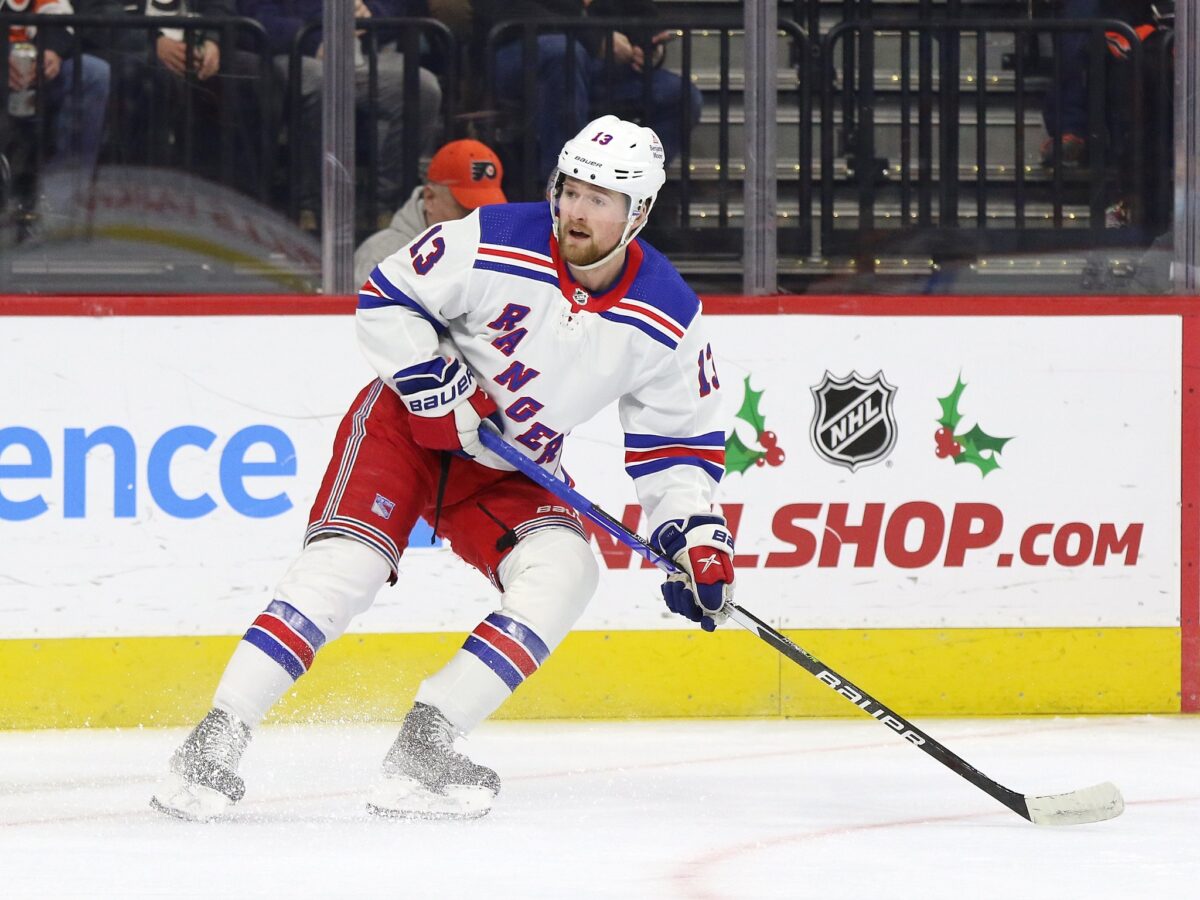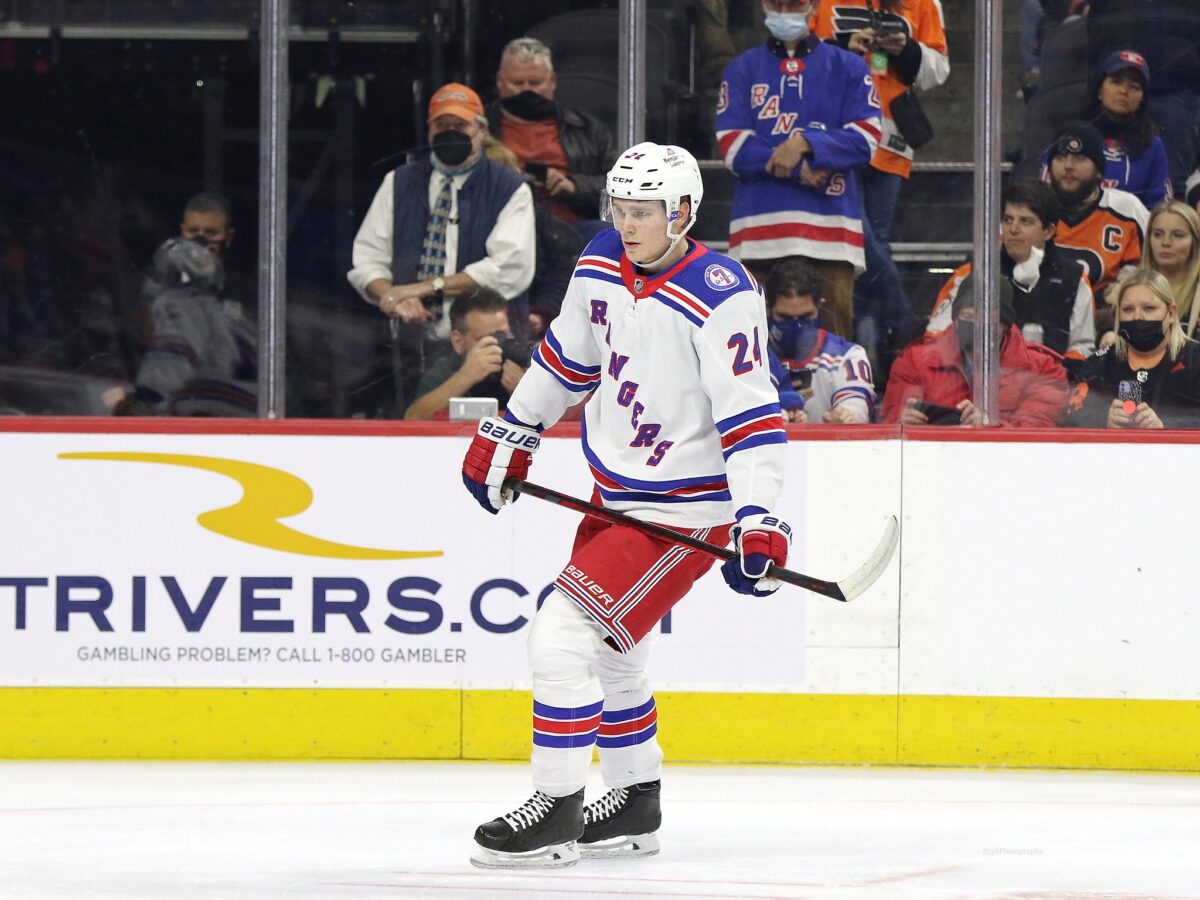Last postseason, the New York Rangers got a massive boost from the impressive play of their “Kid Line” consisting of Filip Chytil, Kaapo Kakko, and Alexis Lafreniere. However, this season head coach Gerard Gallant opted to split up the trio and both Kakko and Lafreniere struggled early on.
With the Rangers playing poorly, Gallant reunited the “Kid Line” and the three young forwards have provided a spark and played a key role in the team winning eight of nine games heading into the holiday break.
Strong Play of the “Kid Line”
Though Chytil played well early in the season, both Lafreniere and Kakko did not produce enough offensively. They failed to capitalize on great scoring opportunities and missed a few open nets. They then started to pass up scoring opportunities and force passes. Their struggles combined with a disappointing stretch of play from Artemi Panarin and Jacob Trouba led an 11-10-5 start to the season for the Rangers.

Since getting the “Kid Line” back together, all three forwards have looked comfortable and confident. They are holding onto the puck and putting pressure on opposing defenders. They have also come through with some important goals late in games, as Chytil scored in overtime to beat the New Jersey Devils on Dec. 12, and on Dec. 22, Kakko scored the game-winning goal with 2:48 remaining against the New York Islanders.
When the trio is on the ice, the Rangers spend much more time in the offensive zone than the defensive zone and they are generating lots of scoring opportunities. Even more importantly, they are now finishing off their opportunities and providing the team with a lot of even-strength offense. In the team’s last nine games, Chytil has four goals and two assists, Lafreniere has two goals and five assists, and Kakko has five goals and two assists.
Importance of the “Kid Line” for the Rangers
Throughout last season and early this season, the Rangers struggled to create even-strength offense. The “Kid Line” has repeatedly generated chances while allowing Gallant to keep veteran stars on other lines. In addition to their line, the top line includes Panarin and Mika Zibanejad, while Vincent Trocheck and Chris Kreider play together on a separate unit. This gives the team three strong lines, and all three have played well over the last few weeks.
Related: Rangers’ Gallant Wise to Keep “Kids Line” Together
When the Rangers played poorly they briefly used Zibanejad, Panarin, and Kreider on their top line but they then failed to get production from the rest of the lineup. The team is better when they have multiple lines that are capable of controlling play and providing offense.
Over the last few years, the Rangers have failed to get the most out of their talented young forwards which makes the “Kid Line” especially important, as they bring out the best in each other. Earlier in the season, Kakko and Lafreniere looked like they were afraid to make mistakes and now they look much more comfortable and confident. Kakko had a turnover that led to an Islanders goal in their matchup on Dec. 22, but he responded with strong play the rest of the game before scoring the game-winning goal.

Though Kakko and Lafreniere have not yet played like stars, they are key players for the Rangers right now and should continue to be for years to come so the Blueshirts need to get the most out of them. Reuniting the “Kid Line” has accomplished that.
For the Rangers Moving Forward
The Rangers played their best hockey of the season going into the holiday break in large part because of the strong play of the “Kid Line.” All three young forwards stepped up and they are playing just as well as they did last postseason.
Though the Rangers will have a difficult road to the playoffs in a stacked Metropolitan Division the emergence of the “Kid Line,” is a great development for the team. They will need their young forwards to contribute and lately Chytil, Kakko, and Lafreniere have all done just that.